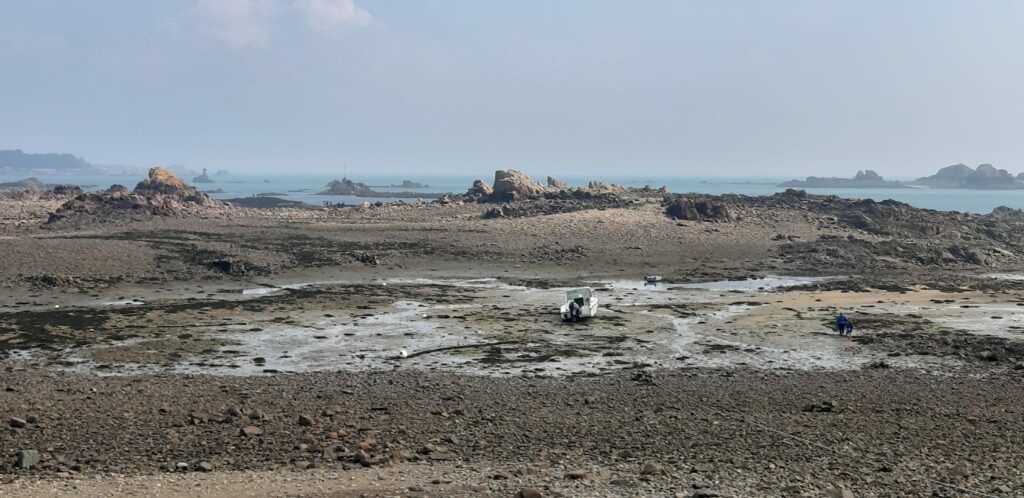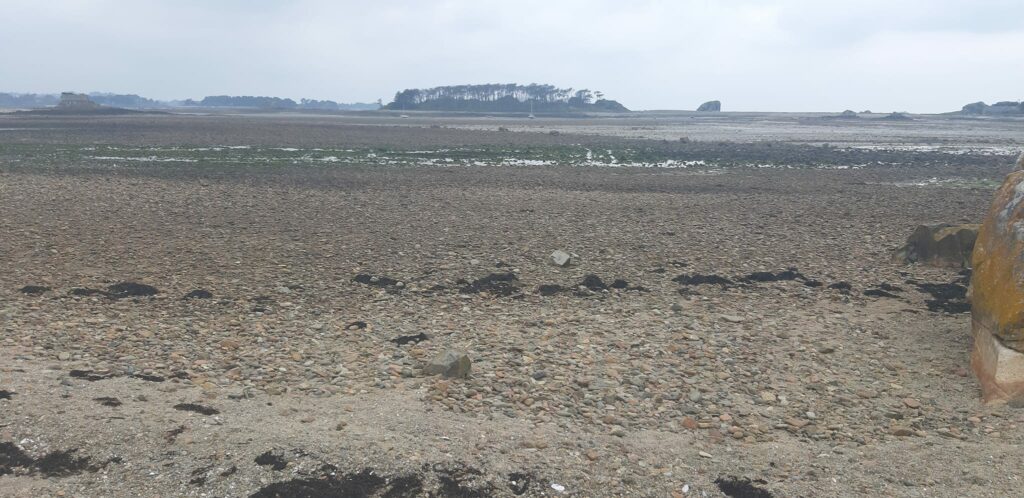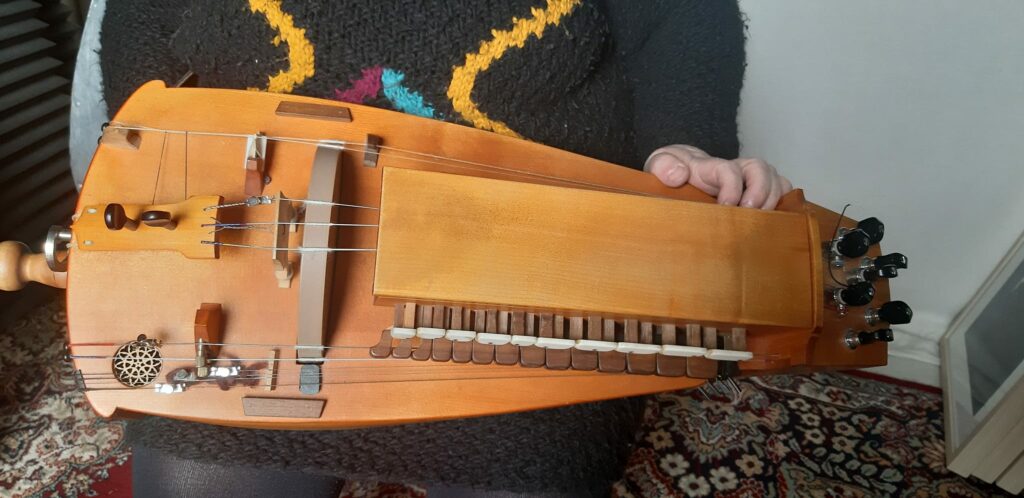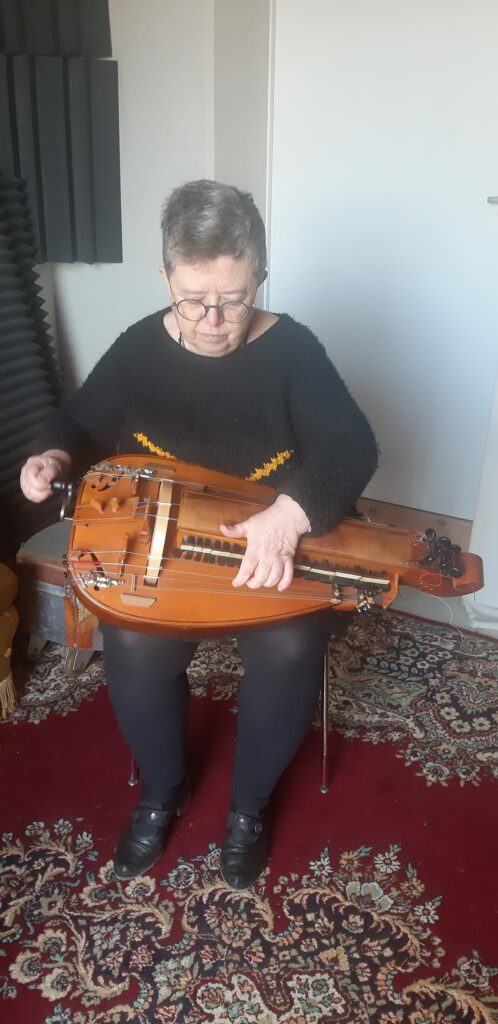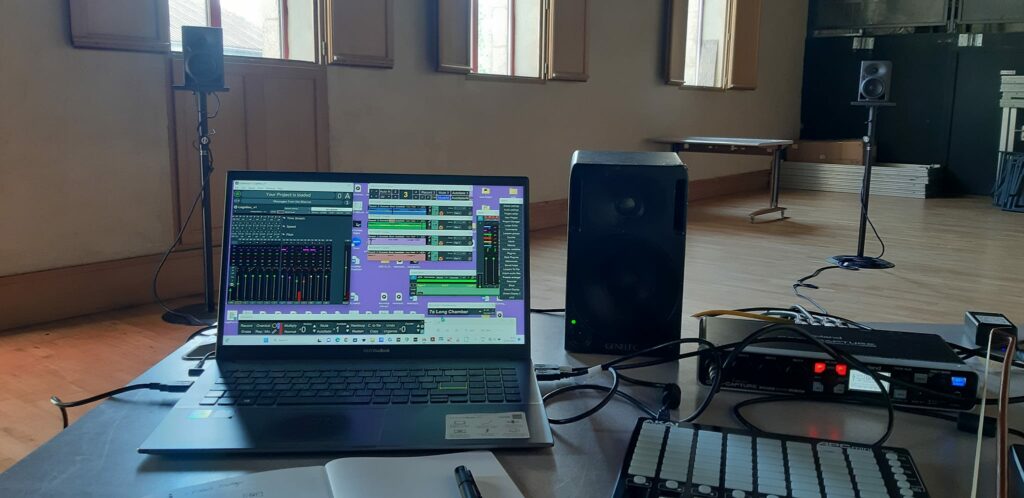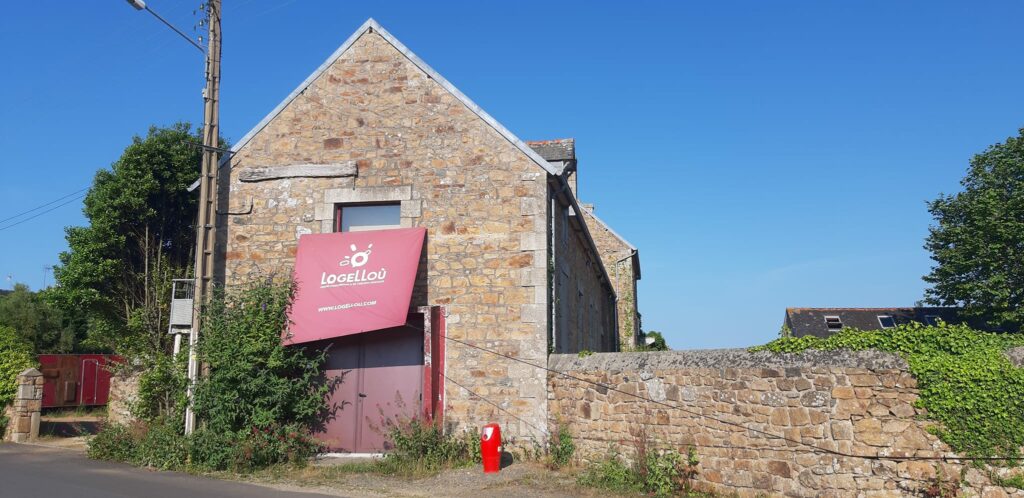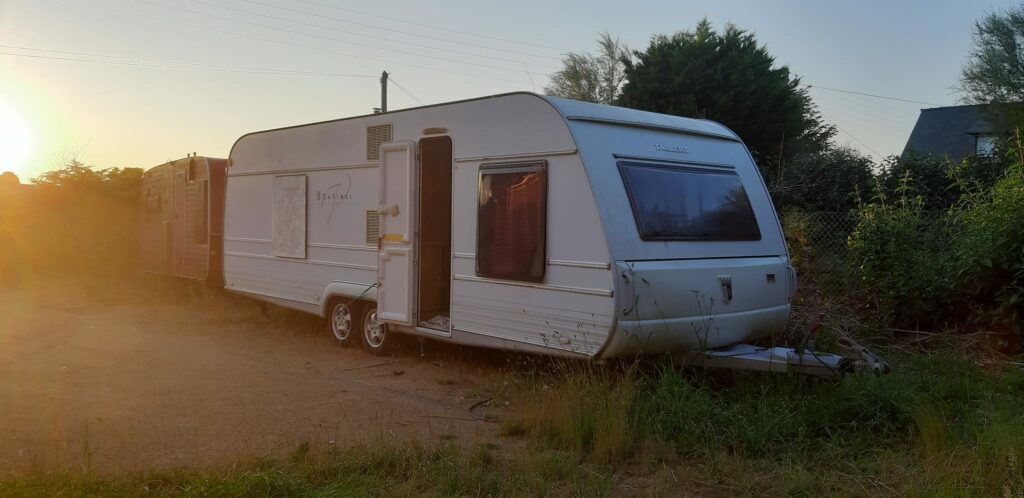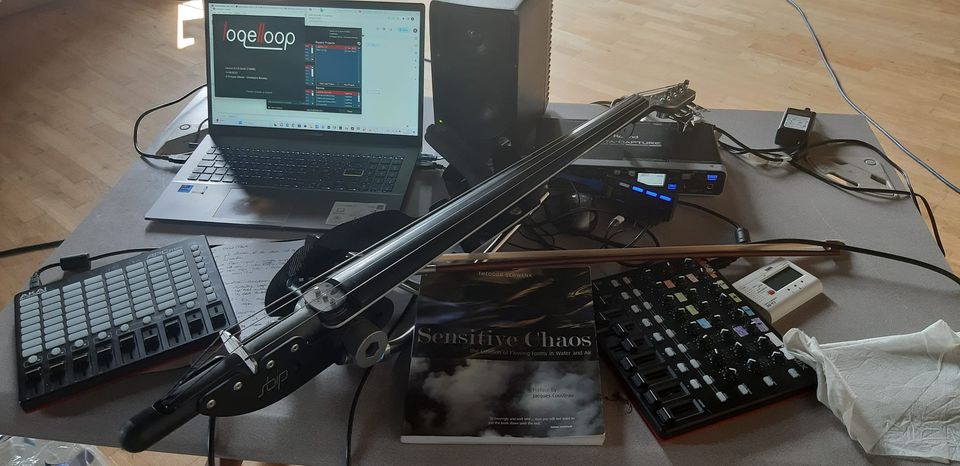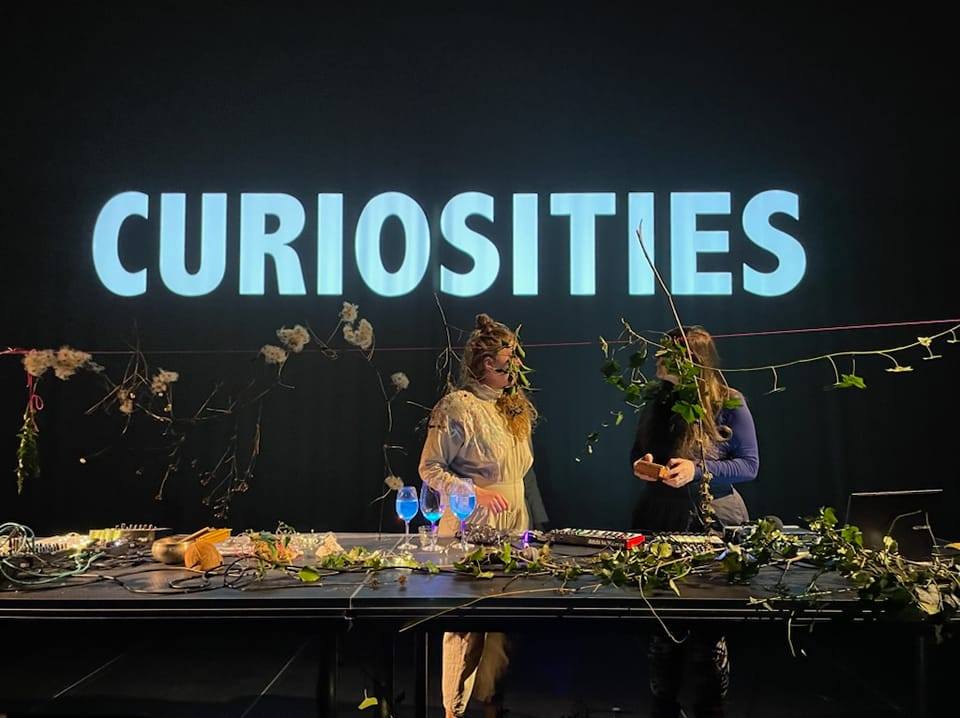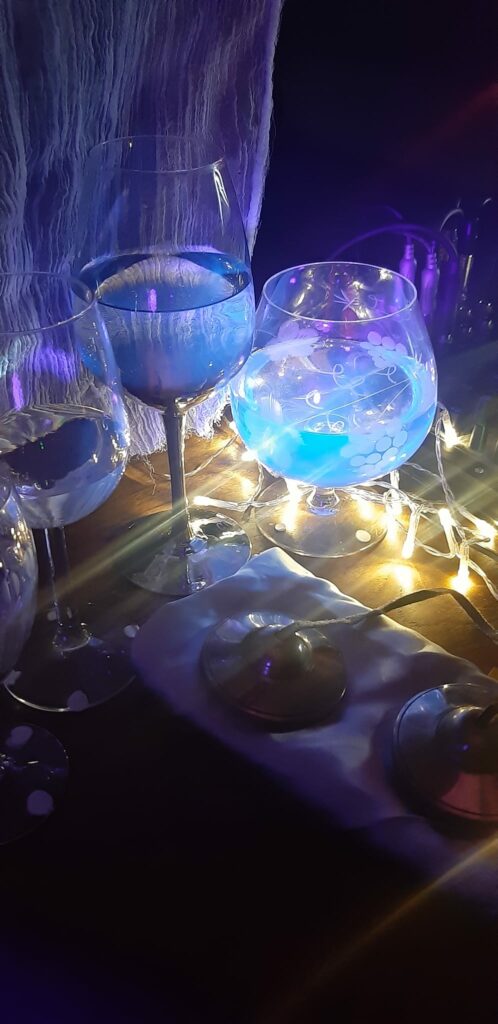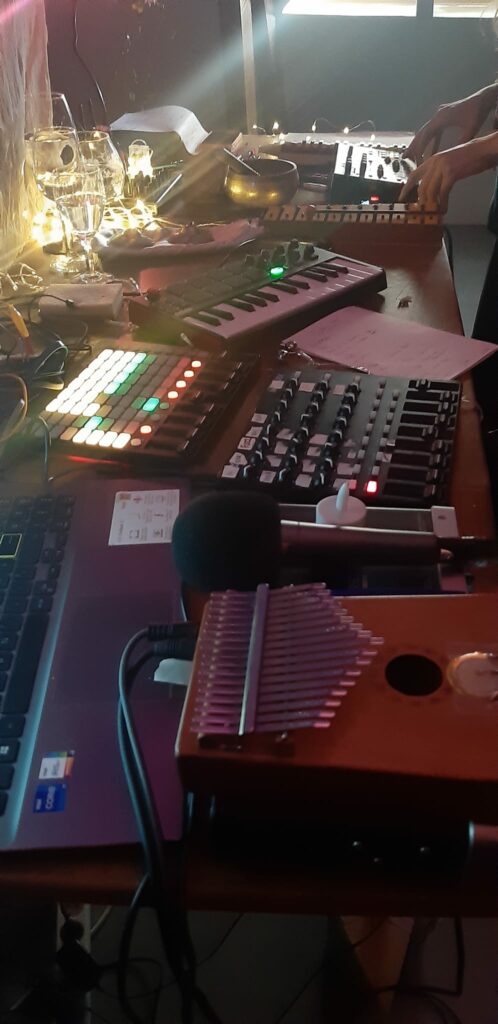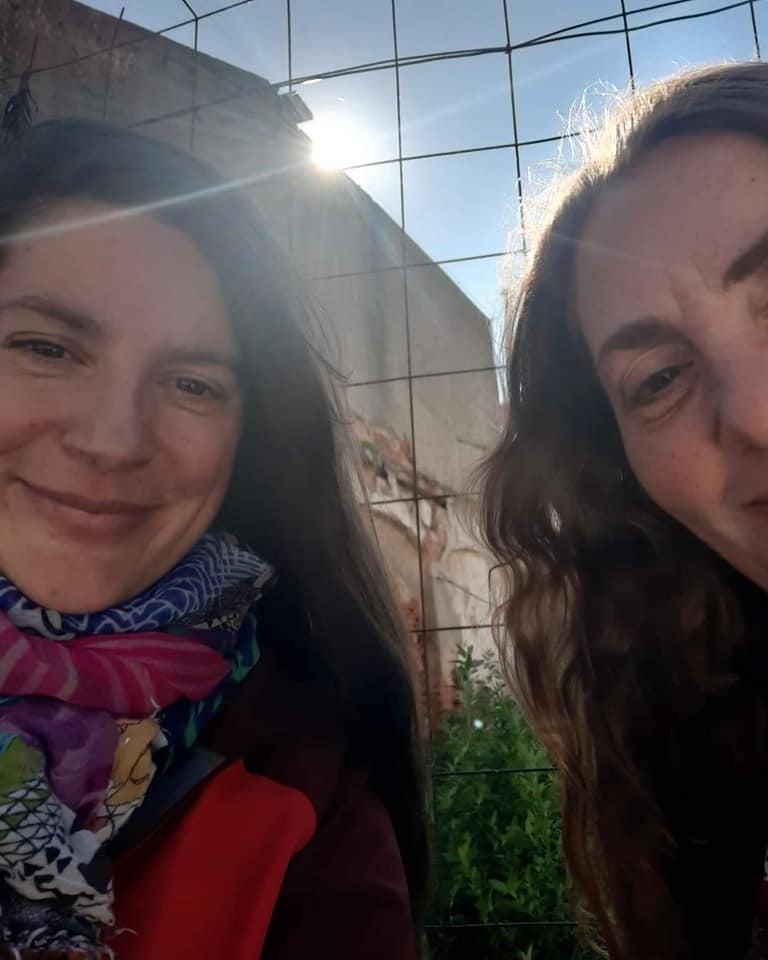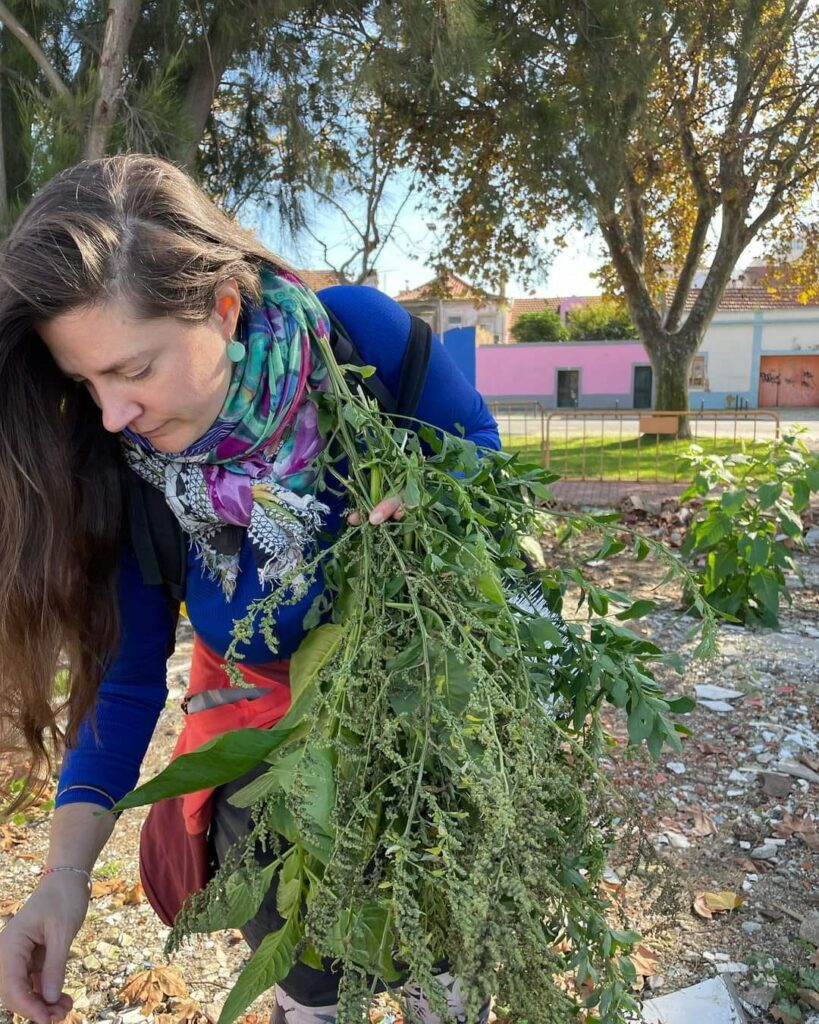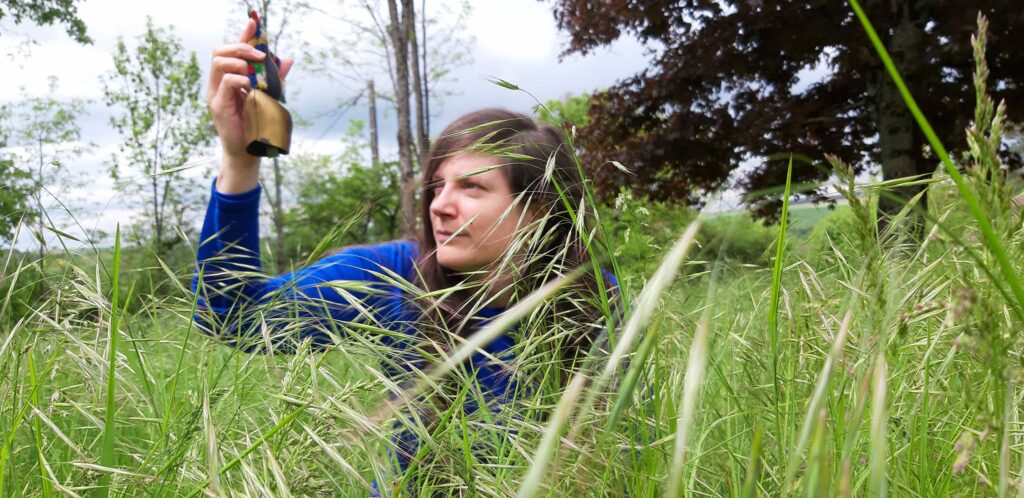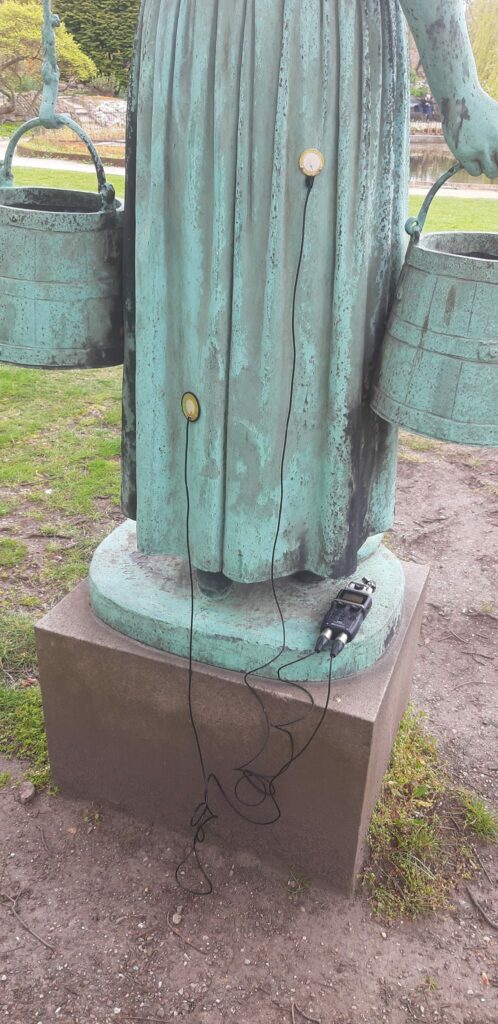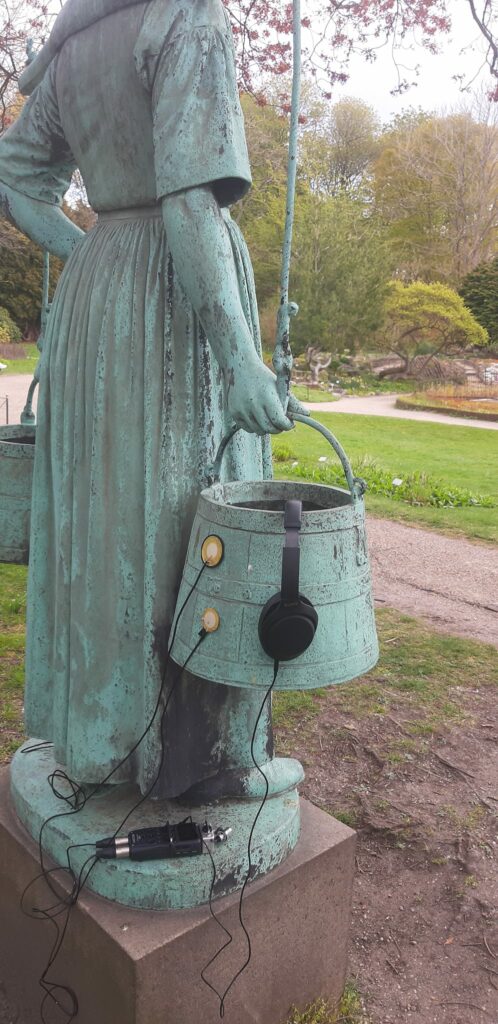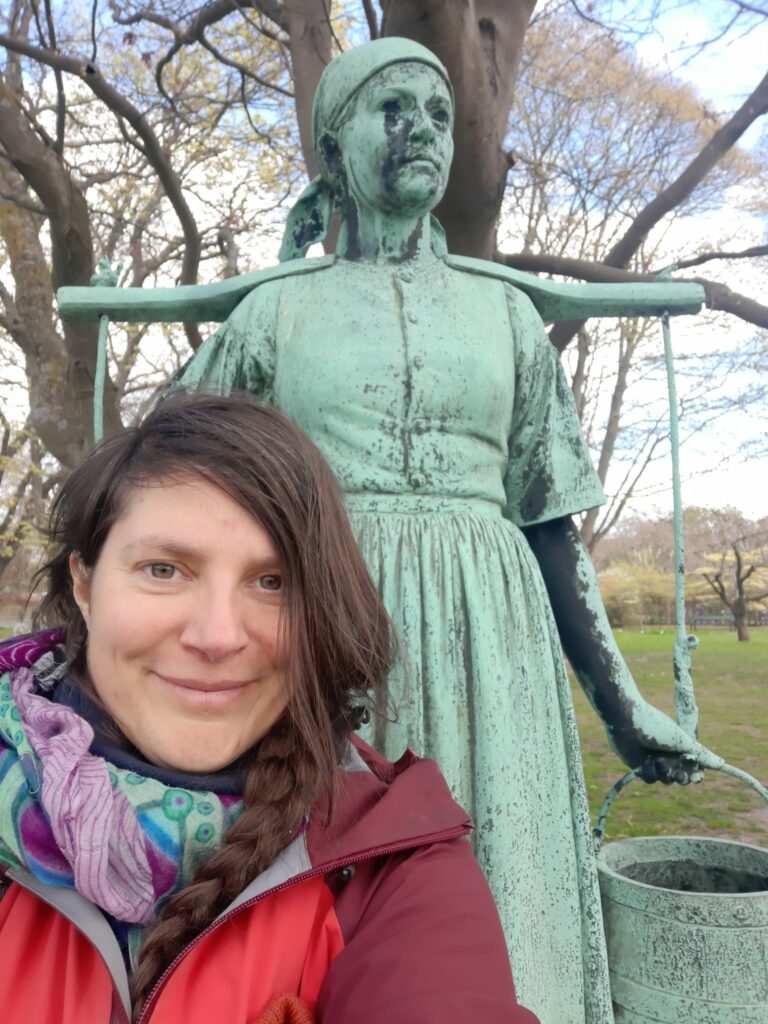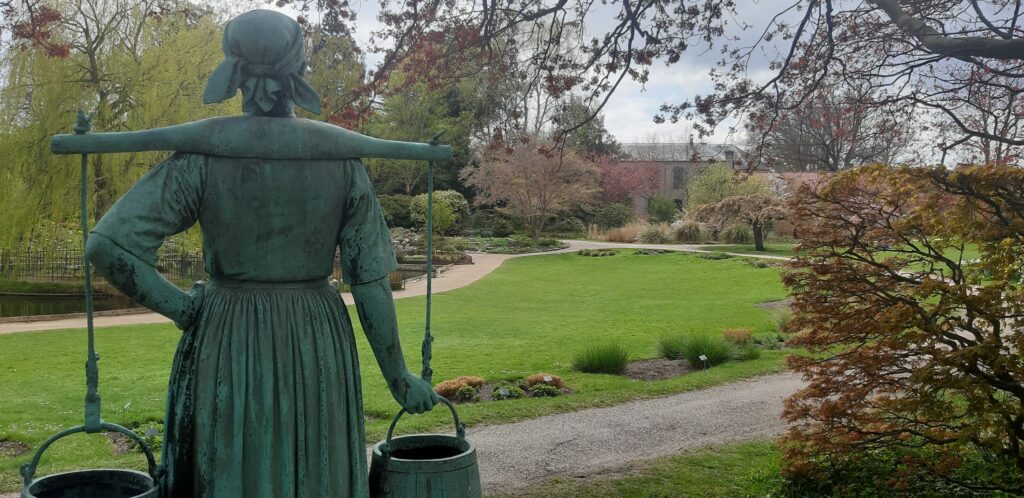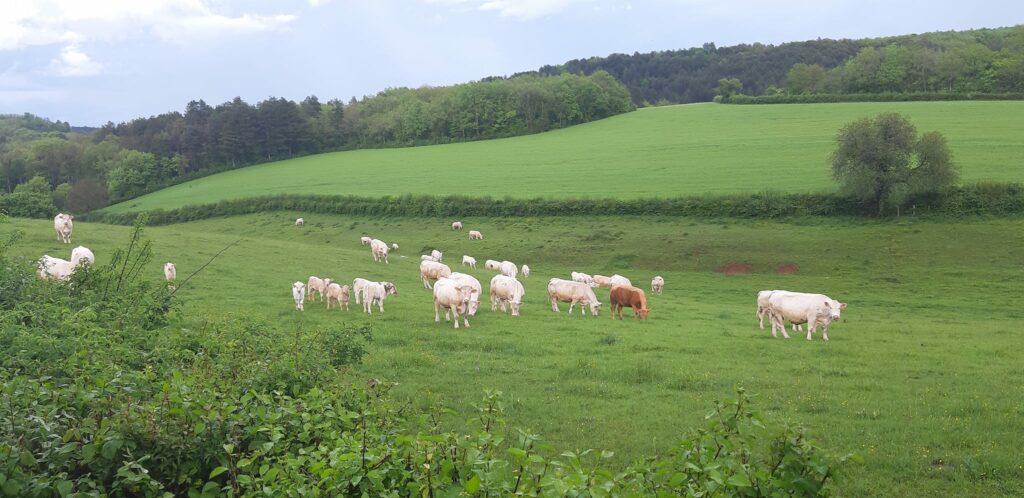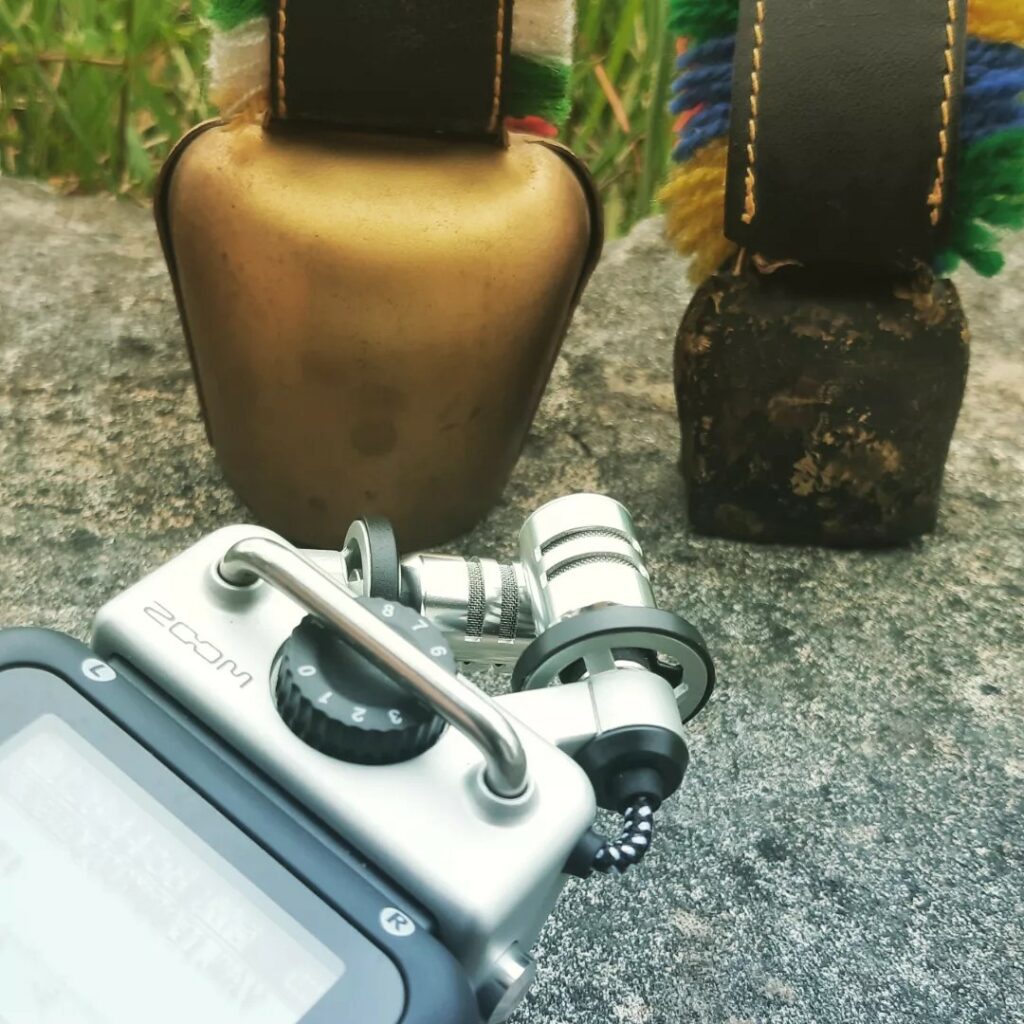
Flowing Forms is a quadraphonic + hexaphonic work consisting of several pieces, composed by Lola Ajima and Ingrid Blasco for live looping of cello, vielle à roue and the software Logelloop, developed at Logelloù by Philippe Ollivier.
The pieces are inspired by movements in nature, like water, air, stones and earth and was sparked by the book “Sensitive Chaos” by Theodor Schwenk.
The beautiful coastline close to Logelloù in Bretagne, with long tides up to several hundreds meters, revealing the stony landscapes under the water was a starting point of the piece as well as the floating, chaotic and yet very graceful movements in water and air that makes up the misty air around the coast.
Titles of pieces:
Apres Têmpete
Brume
Absence
Intervalles Lunaires
Glittering surfaces
Currents
Vielle à roue: Ingrid Blasco
Cello: Lola Ajima
Live graphics: Yukao Nagemi
Initally ordered and supported by Logelloù, Penvenan, during four residency periods in 2023-24.
